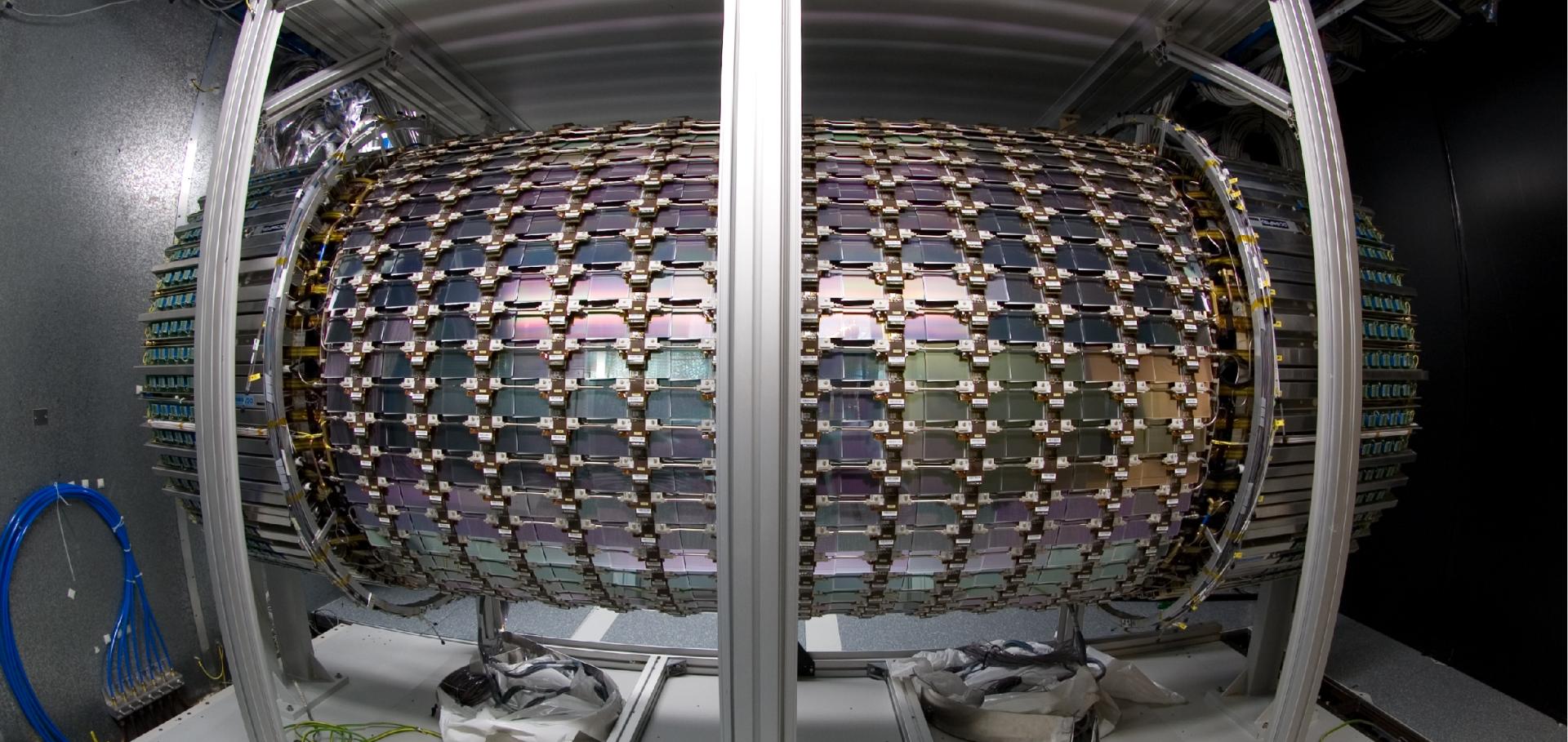The ATLAS semiconductor tracker end-cap module
NUCLEAR INSTRUMENTS & METHODS IN PHYSICS RESEARCH SECTION A-ACCELERATORS SPECTROMETERS DETECTORS AND ASSOCIATED EQUIPMENT 575:3 (2007) 353-389
Authors:
A Abdesselam, PJ Adkin, PP Allport, J Alonso, L Andricek, F Anghinolfi, AA Antonov, RJ Apsimon, T Atkinson, LE Batchelor, RL Bates, G Beck, H Becker, P Bell, W Bell, P Benes, J Bernabeu, S Bethke, JP Bizzell, J Blocki, Z Broklova, J Broz, J Bohm, P Booker, G Bright, TJ Brodbeck, P Bruckman, CM Buttari, JM Butterworth, F Campabadal, D Campbell, C Carpentier, JL Carroll, AA Carter, JR Carter, GL Casse, P Cermak, M Chamizo, DG Charlton, A Cheplakov, E Chesi, A Chilingarov, S Chouridou, D Chren, A Christinet, ML Chu, V Cindro, A Clocio, JV Civera, A Clark, AP Colijn, PA Cooke, MJ Costa, D Costanzo, W Dabrowski, KM Danielsen, VR Davies, I Dawson, P de Jong, P Dervan, F Doherty, Z Dolezal, M Donega, M D'Onofrio, O Dorholt, Z Drasal, JD Dowell, IP Duerdoth, R Duxfield, M Dwuznik, JM Easton, S Eckert, L Eklund, C Escobar, V Fadeyev, D Fasching, L Feld, DPS Ferguson, P Ferrari, D Ferrere, C Fleta, R Fortin, JM Foster, C Fowler, H Fox, J Freestone, RS French, J Fuster, S Gadomski, BJ Gallop, C Garcia, JE Garcia-Navarro, S Gibson, MGD Gilchriese, F Gonzalez, S Gonzalez-Sevilla, MJ Goodrick, A Gorisek, E Gornicki, A Greenall, D Greenfield, S Gregory, IG Grigorieva, AA Grillo, J Grosse-Knetter, C Gryska, A Guipet, C Haber, K Hara, FG Hartjes, D Hauff, SJ Haywood, SJ Hegeman, K Heinzinger, NP Hessey, C Heusch, A Hicheur, JC Hill, M Hodgkinson, P Hodgson, T Horazdovsky, TI Hollins, LS Hou, S Hou, G Hughes, T Huse, M Ibbotson, M Iglesias, Y Ikegami, I Ilyashenko, C Issever, JN Jackson, K Jakobs, RC Jared, P Jarron, P Johansson, RWL Jones, TJ Jones, D Joos, J Joseph, P Jovanovic, O Jusko, V Jusko, J Kaplon, S Kazi, Ch Ketterer, AG Kholodenko, BT King, P Kodys, E Koffeman, Z Kohout, T Kohriki, T Kondo, S Koperny, H Koukol, V Kral, G Kramberger, P Kubik, J Kudlaty, C Lacasta, T Lagouri, SC Lee, K Leney, S Lenz, CG Lester, K Liebicher, M Limper, S Lindsay, V Linhart, G Llosa, FK Loebinger, M Lozano, I Ludwig, J Ludwig, G Lutz, J Lys, M Maassen, D Macina, A Macpherson, C MacWaters, CA Magrath, P Malecki, I Mandic, M Mangin-Brinet, S Marti-Garcia, JP Matheson, RM Matson, SJ McMahon, TJ McMahon, J Meinhardt, B Mellado, JJ Melone, IJ Mercer, I Messmer, B Mikulec, M Mikuz, M Minano, VA Mitsou, P Modesto, S Moed, B Mohn, S Moncrieff, G Moorhead, FS Morris, J Morris, M Morrissey, HG Moser, A Moszczynski, AJM Muijs, WJ Murray, D Muskett, J Nacher, K Nagai, I Nakano, RB Nickerson, R Nisius, OK Oye, V O'Shea, E Paganis, MA Parker, U Parzefall, JR Pater, SJM Peeters, G Pellegrini, G Pelleriti, H Pernegger, E Perrin, PW Phillips, LV Pilavova, K Poltorak, S Pospisil, M Postranecky, T Pritchard, K Prokofiev, JM Rafi, C Raine, PN Ratoff, P Reznicek, VN Riadovikov, RH Richter, A Robichaud-Veronneau, D Robinson, R Rodriguez-Oliete, S Roe, A Rudge, K Runge, A Saavedra, HFW Sadrozinski, FJ Sanchez, H Sandaker, DH Saxon, D Scheirich, J Schieck, A Seiden, A Sfyrla, T Slavicek, KM Smith, NA Smith, SW Snow, M Solar, B Sopko, V Sopko, L Sospedra, E Spencer, E Stanecka, S Stapnes, J Stastny, V Strachko, A Stradling, B Stugu, DS Su, P Sutcliffe, R Szczygiel, R Tanaka, G Taylor, PK Teng, S Terada, RJ Thompson, M Titov, B Toczek, DR Tovey, G Tratzl, VL Troitsky, J Tseng, M Turala, PR Turner, M Tyndel, M Ullan, Y Unno, T Vickey, E Van der Kraaij, G Viehhauser, EG Villani, T Vitek, T Vu Anh, AP Vorobiev, JH Vossebeld, M Wachler, R Wallny, CP Ward, MRM Warren, M Webel, M Weber, M Weber, AR Weidberg, P Weilhammer, PS Wells, P Wetzel, M Whitley, M Wiesmann, I Wilhelm, M Willenbrock, I Wilmut, JA Wilson, J Winton, M Wolter, MP Wormald, SL Wu, X Wu, H Zhu, N Bingefors, R Brenner, T Ekelof


